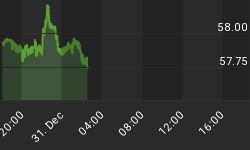The economies of Southern Europe continue to experience extreme duress. For example, the bad loans of Spanish banks jumped to 10.5% in August, which is up 17 straight months and has increased from just .72% at the end of 2007. However, the answer provided by governments and central banks to propel the economy is to create more of the same condition that brought about the problems in the first place. That is, to increase the level of base money in the hopes of increasing the rate of broad money supply growth and inflation. But despite the fact that inflation is already growing at 2.6% in the Eurozone, Mario Draghi is still promising to do whatever it takes to dilute the Euro's purchasing power and create more inflation.
Official Chinese statistics show that GDP has dropped from north of 10% for all of 2010, to just 7.4% in third quarter of this year. Other measures of growth like power consumption are up just 1.5% from a year ago. Therefore, the PBOC has injected record amounts of Renminbi into money markets and has lowered the reserve requirement for banks three times in the past year. Both measures have caused China's money supply, as measured by M2, to increase 14.8% YOY, which is the fastest pace in 15 months.
In the U.S., the anemic pace of growth pervades throughout the economy. Initial jobless claims surged 46k last week, erasing the entire drop in the week prior. In addition, ninety three S&P 500 companies reporting earnings so far for the third quarter have shown that profits are down 0.5%. The sad facts are that GDP and earnings growth in America is just about flat. Therefore, the Fed has already placed interest rates at zero percent for the last four years and has caused M2 money supply to be up 7% YOY.
The strategy of governments and central banks is clear; lower interest rates and pump money into the system in order to re-inflate asset prices and releverage the economy. Although they have been very successful at debasing their currencies, they have missed a very key point. That is, an increase in money supply growth and inflation does not equate to an improving economy. And when taken to the extreme levels we see today, it instead leads to a protracted period of persistently weakening economic growth.
Money supply growth should never eclipse labor force + productivity growth. When inflation rises faster than GDP, malinvestments are created and asset bubbles form. That is especially true today as we see a tremendously-dangerous bubble being created in all the bond markets of the developed world. But what is also true is that government debt that is being systematically monetized by central banks is slowly destroying any confidence left in fiat currencies. As more and more credibility is lost in paper money, GDP growth will continue to decrease in real terms.
As long as governments continue to produce massive annual deficits that are purchased by their central banks, the global economy will continue to stagnate and inflation will increase. What is also true is that equity markets tend to rise over time in nominal terms because excess money creation lowers the value of currencies and raises stock prices. However, the increase in equity values seldom keeps pace with the rate of inflation. To accomplish the goal of achieving a real rate of return on investments after taxes and inflation are considered, history proves that can only be supplied by owning hard assets.
















